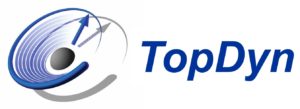

Seminar über die Physik der kondensierten Materie (SFB/TRR173 Spin+X und SFB/TR288 Kolloquium, TopDyn-Seminar)
Jan. 26, 2023 at
2 p.m.
in
01-122 Newton Raum
Univ-Prof. Dr. Jure Demsar
Univ.-Prof. Dr. Hans-Joachim Elmers
Univ.-Prof. Dr. Mathias Kläui
Univ.-Prof. Dr. Thomas Palberg
CNRS senior researcher
Vincent Cros (Unité Mixte de Physique CNRS, Thales, Univ. Paris-Saclay)
From 2D skyrmions to 3D cocoons : nucleation, motion and electrical detection of non collinear topogical spin textures
Vincent Cros
Unité Mixte de Physique, CNRS, Thales, Université Paris-Saclay, 91767, Palaiseau, France.
In the last decade, magnetic multilayers have proven to be essential structures for creating and investigating complex, topologically non-trivial spin textures through the ability to tune their composition and properties [1-2]. Two-dimensional magnetic textures such as skyrmions (or chiral domain walls) were mostly under focus. First, I will share some of our recent results showing the skyrmion nucleation can be precisely controlled using injection of current pulses through artificial notches and show how the spin-orbit torques, responsible for the skyrmion motion, can be optimized in multilayers. More specifically, I will explain how, in atomically thin Co, the SOTs amplitudes, both for damping and field-like symmetries, varies significantly when a light element, such as Al is deposited on top of Co, surpassing the values existing in literature [3]. Then I will describe how the presence and the displacement of skyrmions can be precisely followed through a simple electrical detection. By relying on our ability to perform fully-electrical manipulation and detection of magnetic skyrmions in multilayers, I will present some recent device developments for performing a basic unconventional computation operation in hardware.
Beyond the 2D skyrmions, a strong interest has emerged for more complex magnetic objects which display a non-homogeneous behavior over the vertical dimension, giving them a 3D character e.g. magnetic bobbers [4] or the recently observed hopfions [5]. In the second part of my talk, I will present our recent results on 3D spin textures, called skyrmionic cocoons [6], that have a typical ellipsoidal shape and that can be stabilized in aperiodic magnetic multilayers with a variable thickness for the ferromagnetic elements. Interestingly, these skyrmionics cocoons can coexist with more standard tubular skyrmions going through all the multilayer as evidenced by the existence of two very different contrasts in room temperature magnetic force microscopy. They can also be electrically detected using magneto-transport measurements, an interesting feature for potential applications. The presence of these novel skyrmionic textures as well as the understanding of their layer resolved chiral and topological properties have been investigated by micromagnetic simulations. Finally, I will describe how the use of x-ray holography and x-ray laminography gives a precise insight into the 3D distribution of the magnetization which demonstrate the 3D nature of skyrmionic cocoons.
Financial supports from FLAG-ERA SographMEM (ANR-15-GRFL-0005), from ANR MEDYNA (ANR-20-CE42-0012), from “Investissements d’Avenir" program SPiCY (ANR-10-LABX-0035), from France 2030 government grant (ANR-22-PEPR-Electronique-EMCOM and ANR-23-PEPR-Spin) and the EU Horizon2020 Programme under FET-Proactive Grant agreement No. 824123 (SKYTOP) are acknowledged.
[1] A. Fert, N. Reyren and V. Cros, Nat. Rev. Materials 2, 17031 (2017)
[2] K. Everschor-Sitte et al, J. Appl. Phys. 124, 240901 (2018)
[3] S. Krishnia, VC et al, arXiv:2205.08486 (2022)
[4] F. Zheng et al. Nat. Nanotech., 13, 451 (2018)
[5] N. Kent et al. Nat. Comm. 12, 1 (2021)
[6] M. Grelier, VC et al. Nature Comm, 13, 6843 (2022)